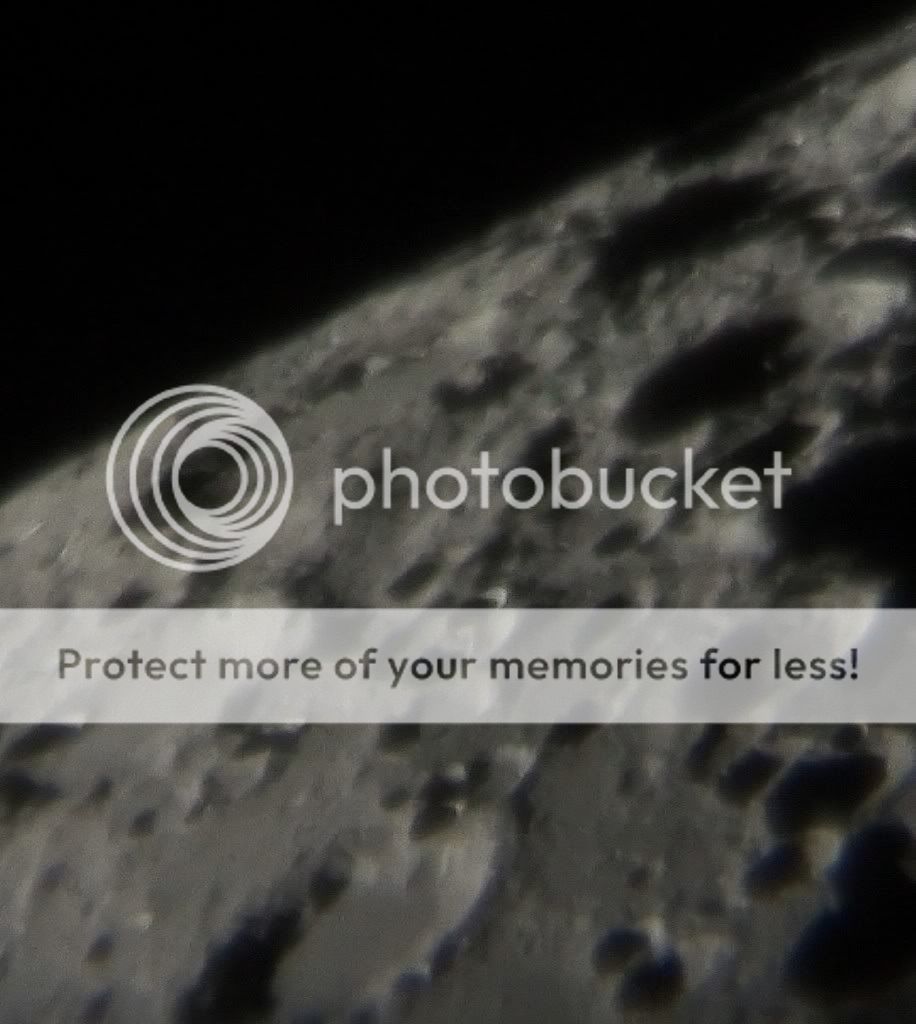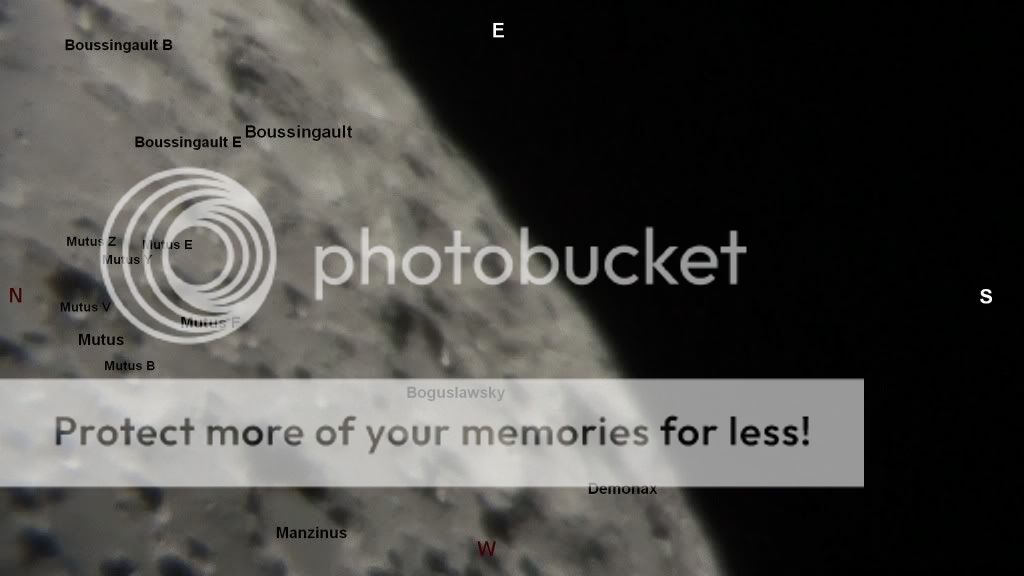Photographer: Victor Lupu
Optics: Celestron C8-Newtonian telescope, plossl 20mm, 2x Barlow
Mount: CG5 (EQ5)
Device: Sony CX105
Filter: No
Date: 10/02/2011
Location: Baia Mare, Romania
Processing: 10 Sony Vegas, video captures
In both top and bottom photos are craters Boguslawsky, Manzinus and Mutus, in the first photo are Pentland (56 km), Sempilius A, Scott (108 km) and Demonax (114 km) ,Schomberger (85 km) and Boussingault (131 km) .
Pentland (56 km), is a Moon impact crater on the south regions, and it appears distorted when viewed from Earth. Sempilius A is neighbor to the south, and Manzinus at east. On the rim of this crater is a depression along the southern edge,on which is attached a small crater on the outside. The inner wall keeps some untouched structures. The interior shows an elongated central increase in the midpoint. The floor is almost with no features, except for some small craters.
Crater name comes from Joseph Barclay Pentland (1797 - 12th July 1873) which was an Irish geographer and natural scientist. Born in Ireland, was educated at Pentland. He also studied in Paris and worked with Georges Cuvier.
Scott (108 km) is a crater near the south pole of the Moon. The northern side of the crater is in continuous darkness, and has not been mapped in detail. Scott is between similar-sized crater Amundsen in the southeast and Schomberger northwest . In the northeast is Demonax.The placement of Scott and Amundsen crater on the south pole , refers to two antarctic explorers, Roald Amundsen and Robert Falcon Scott, in their race to be the first people to reach the south pole of the Earth.
Demonax (114 km) is in a difficult location to be watched.Demonax crater lies north of Scott. To the northwest is the crater Boguslawsky.The floor was renewed, leaving it flat. However, there is a group of central peaks near the middle.
The name comes from Demonax (Greek: Δημώναξ, Dēmōnax, 70-170) who was a philosopher born in Cyprus. He moved to Athens, known for his wisdom and talent for resolving disputes.This brought him the admiration of the citizens.
Schomberger (85 km) is located near the southern edge of the Moon. The younger satellite Schomberger A (31 km) is attached to the southern rim and Schomberger C (43 km), much older, just outside western edge. Crater is a relatively well defined, with sharp features and was not significantly affected by impacts. Edge is approximately circular with an inner wall complex marked by increased peaks and several terraces. Interior floor is relatively flat. At the midpoint of the interior is a complex of central peaks.
Boussingault (131 km). The most notable aspect of this crater is the large crater that is entirely within its outer walls, so that it resembles a double-wall formation. Outer edge is affected by other impacts and Boussingault K (29 km), is located in north-western edge. To the northwest there is also a formation of craters superposed: Boussingault E (98 km), B (54 km) and C (24 km).
Crater name comes from Jean-Baptiste Joseph Dieudonné Boussingault (February 2 1802- 11 May, 1887) which was a french chemist who has made a significant contribution to the science of agriculture, oil and metallurgical science.




 Thursday, May 26, 2011
Thursday, May 26, 2011
 Unknown
Unknown







 Posted in:
Posted in: 


0 comments:
Post a Comment